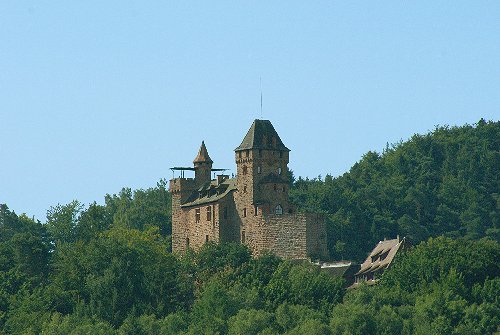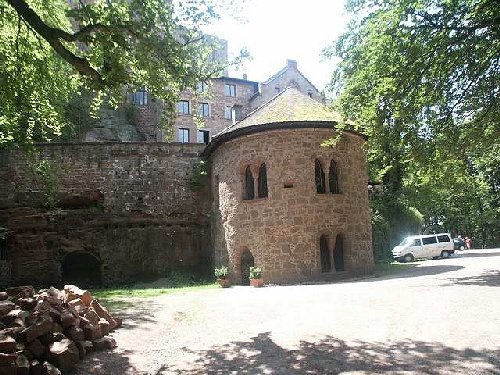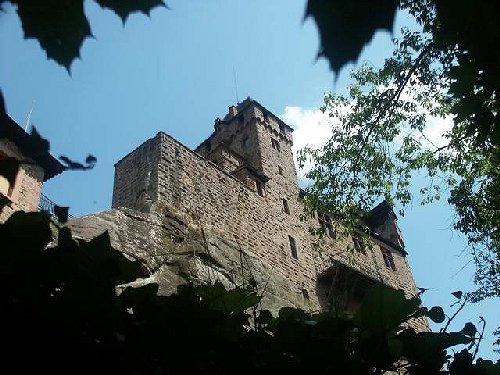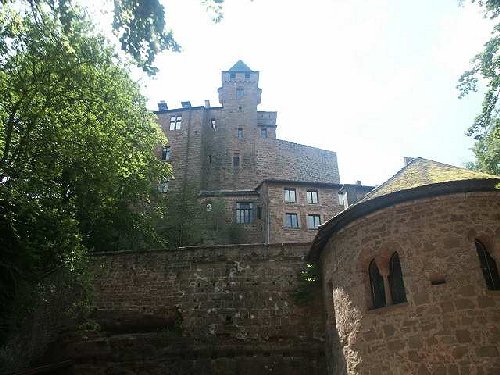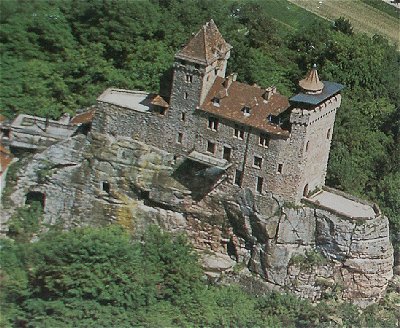I didn't actually tour Berwartstein, since it was only a guided tour. However, between 2005 and 2008 I was able to get some decent representative photos of the castle (the one to the right from 2008).
Berwartstein is the only castle in the region that is still occupied today. It was first mentioned in documents in 1152 when Emperor Frederick Barbarossa of the Holy Roman Empire left it in the hands of Bishop Georg of Speyer. In 1314, it was destroyed when the lords were found guilty of raiding the countryside. Rebuilt, it was passed on to Elector Frederick I of the Palatinate in 1453. Enlarged in 1485, it was passed on to the Fleckenstein family, who held it until 1637, even though it was almost completely wrecked by lightning in 1591. The castle passed from Emperor Ferdinand III to the von Waldenburg family, who retained it until the French Revolution. Still a ruin, the von Baginski family gained possession in the late 1800s and began to rebuild it.
Below, one view showing the covered tower. Its visual dominance of the area is obvious.
Above, a splendid view of the castle looking almost due south. The front "prow" of the lower fortification was fairly common in the castles built in this area due to the way they sit atop sandstone tables.
Below, Berwartstein from below. The sandstone table on which the castle sits can be clearly seen.
Below left, an aerial photo that was displayed on the historical summary board at the castle (thus, not taken by myself). The sandstone table is visible, and the way the castle conforms to the terrain. Most castles in this region looked much like Berwartstein.
Below right, the historical board's diagram of the castle.
Left and below, outer and inner structures of the castle. The round turret (#1 on the diagram below) is near the entrance to the inner ward, thus providing protection if the outer ward was breached.
Below, a view looking up to the main structure in the inner ward from the same turret.
